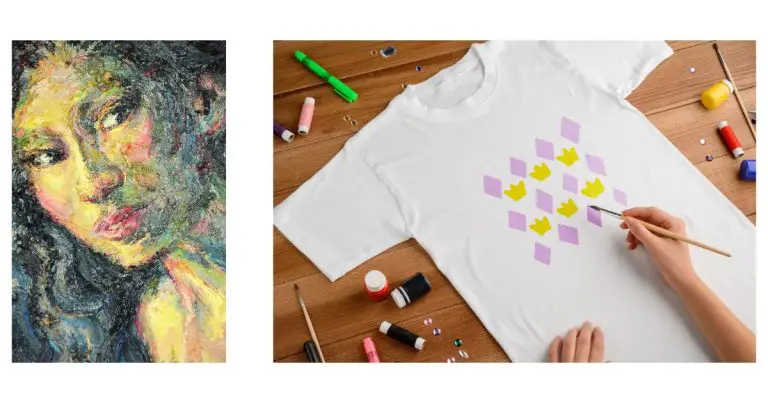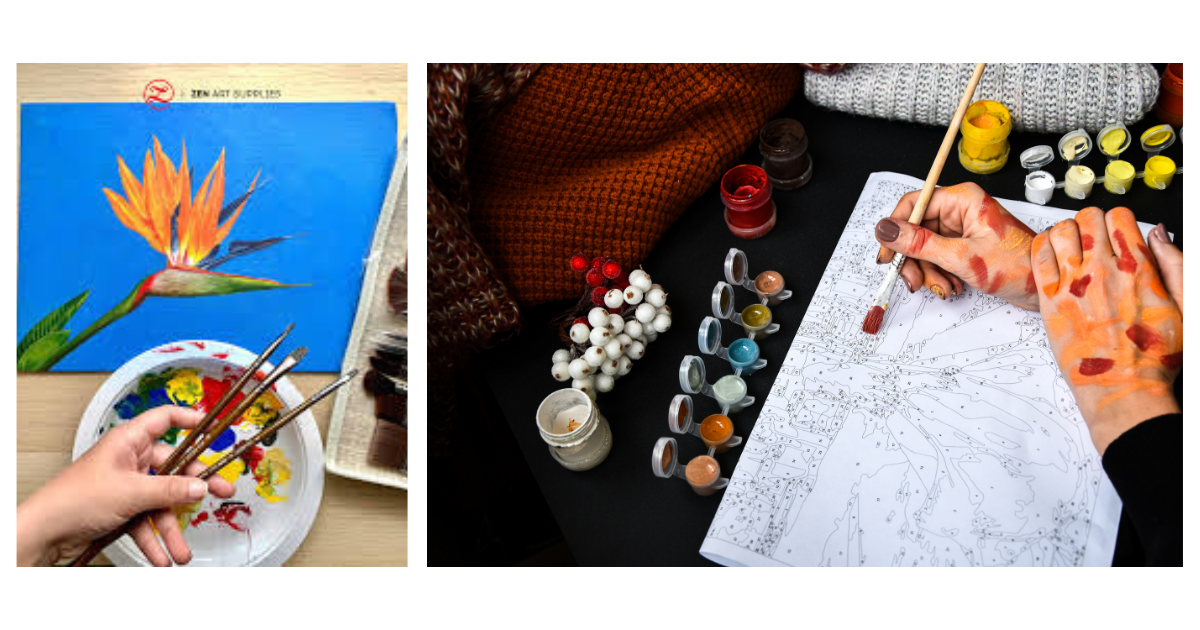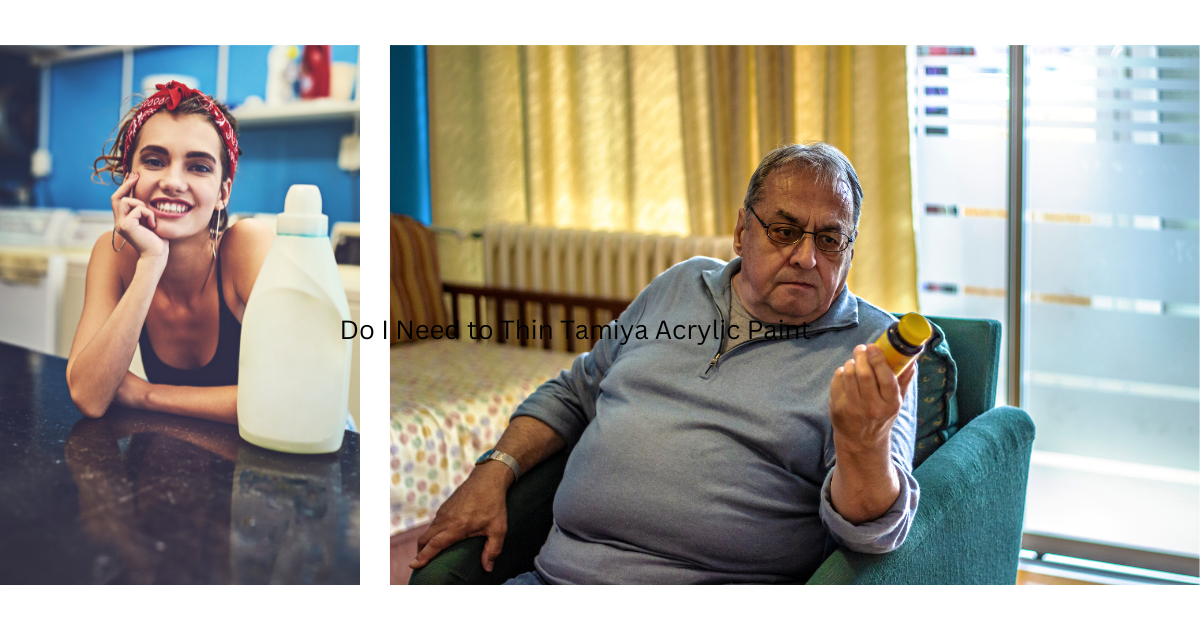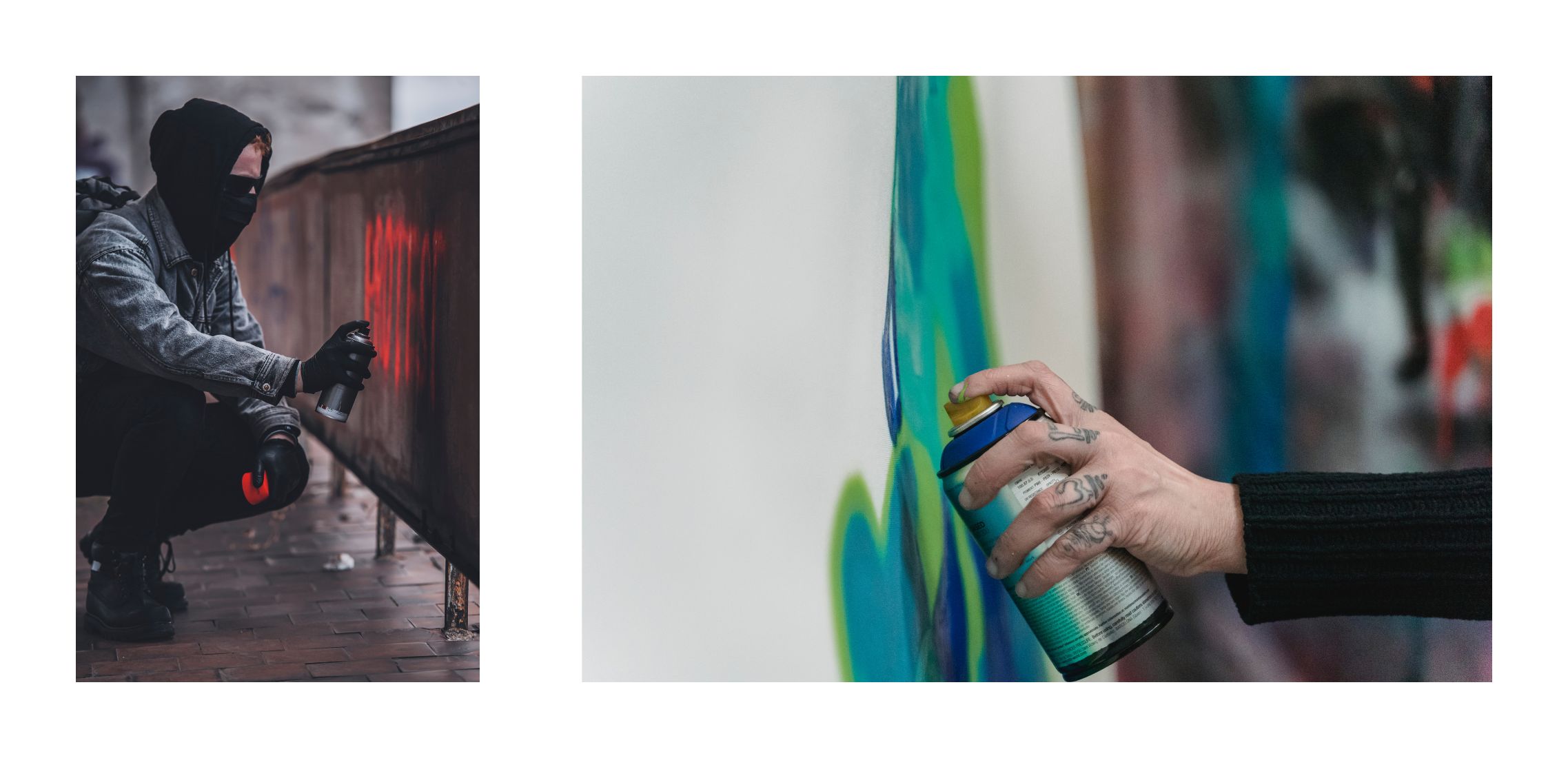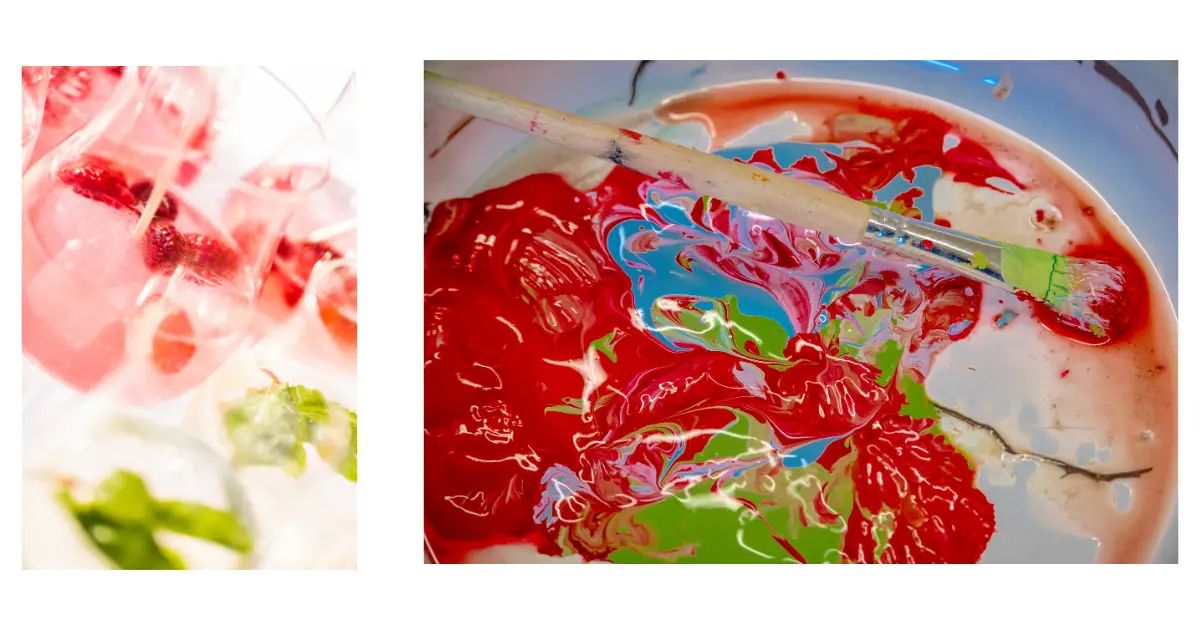Yes, you can paint on fabric with oil paint. The key is to choose the right type of fabric and to prepare it properly so that the paint will adhere to the fabric and not bleed through. When choosing a fabric, look for one that is made of natural fibers such as cotton or linen.
You will also want to choose a fabric that is tight weave so that the paint does not bleed through. To prepare the fabric, you will need to wash it and then dry it completely. Once dry, you will need to iron the fabric so that there are no wrinkles.
Then, you can begin painting on the fabric just as you would with any other surface.
- Begin by choosing the fabric you would like to paint on
- Cotton is a good option as it is absorbent and won’t stretch when wet
- Pre-wash your fabric if you plan on washing the finished product
- This will remove any sizing that could prevent the paint from adhering properly
- Iron your fabric to remove any wrinkles
- This will provide a smooth surface to work on
- Choose your oil paints and thin them with a medium such as linseed oil or turpentine
- The thinner the paint, the easier it will be to work with on fabric
- sketch out your design or image onto the fabric using a light pencil or chalk before painting over it with oils
- Start painting, using thin layers of color at first until you build up the desired opacity
- Allow the paint to dry completely between each layer
- Once you are happy with your design, set the paint by ironing over it with a hot iron (on the wrong side of the fabric)
- This will help to heat-set the pigments in place so that they don’t bleed when washed
How to Paint Fabric – Painting Demonstration
How to Paint on Fabric Permanently
Whether you’re looking to add a personal touch to your clothing or spruce up some old furniture, painting on fabric is a great way to do it! And the best part is, with the right supplies and technique, your designs will be permanent. Here’s what you need to know about how to paint on fabric permanently:
Supplies:
- Fabric paint acrylic or textile)
- Paintbrush or sponge applicator
- Stencil (optional)
Instructions:
- Prewash your fabric if it’s new, and iron it if it’s not. This will help the paint adhere better.
- Place your stencil on the fabric if you’re using one. Otherwise, start freehanding your design!
- Apply the paint evenly over the entire stencil or design area. Make sure not to overload your brush or applicator, as this can cause the paint to bleed under the stencil.
- Allow the paint to dry completely before moving on to the next step.
- Once the paint is dry, heat set it by either ironing over top of it for 3-5 minutes with a hot iron (no steam) or by placing it in a clothes dryer on high heat for 30 minutes. This will help ensure that your design doesn’t crack or fade over time!
What Paint to Use on Fabric
When it comes to painting fabric, there are a few things you need to take into account in order to choose the best paint for the job. The first is the type of fabric you’re working with. Different fabrics will require different types of paint in order to achieve the best results.

For example, natural fibers like cotton or linen will absorb paint differently than synthetic fibers like polyester or nylon. Another thing to consider is the finish you want for your fabric. Do you want a matte finish or a glossy finish?
This will also affect what type of paint you use. Finally, think about how durable you need the paint job to be. If you’re painting something that will get a lot of wear and tear, like upholstery or clothing, then you’ll need a more durable paint that can withstand washing and other wear and tear.
Once you’ve considered all of these factors, it’s time to choose your paint! Here are some great options for painting fabric: Acrylic Paint: Acrylic paint is a versatile option for painting fabric.
It comes in both matte and glossy finishes, so you can choose what look you want for your project. Acrylic paint is also very durable, making it a great choice for clothing or other items that will see a lot of use. Fabric Paint: Fabric paints are specifically designed for use on fabric, so they’re ideal if you’re looking for good coverage and vibrant colors.
They come in both permanent and temporary formulas, so you can choose what works best for your project. Just be sure to follow the manufacturer’s instructions carefully when using this type of paint on fabric. Paint Pens: Paint pens are another great option for painting fabric because they offer precise control over where the color goes.
They’re perfect for creating detailed designs or patterns on fabric surfaces. Plus, they come in washable formulas so they won’t ruin clothes if they get accidentally laundered!
How to Seal Oil Paint on Fabric
When it comes to painting on fabric, there are a few different mediums you can use. But oil paint is by far one of the best choices. It’s durable and has a beautiful finish.
Plus, it’s relatively easy to work with. But before you start painting, you need to make sure you seal the fabric first. If you don’t seal your fabric, the paint will eventually bleed through and ruin your work.
You can buy special fabric sealing products at most craft stores. But if you want to save some money, you can also use clear nail polish or even hairspray! Just make sure whatever product you use is non-toxic and won’t damage your fabric.
To seal your fabric, simply apply a thin layer of sealant over the entire surface area that you plan on painting. Let it dry completely before starting to paint. Once your paintings are finished, they should be set and won’t bleed through or come off easily.
How to Make Acrylic Paint Stay on Fabric
If you’re looking for a way to add some color to your wardrobe, acrylic paint is a great option. However, if you’re not careful, it can be easy to end up with paint on your clothing that won’t come out in the wash. Here are a few tips to help you avoid that fate and keep your clothes looking great:
- Choose the right fabric. Some fabrics are more likely to absorb paint than others. For best results, use a cotton or linen fabric.
- Pre-wash the fabric before painting it. This will help set the fibers and prevent the paint from seeping in too much.
- Use multiple thin layers of paint rather than one thick layer. This will help the paint dry evenly and prevent it from cracking or flaking off later on.
- Let each layer of paint dry completely before adding another one on top. If you’re in a hurry, you can speed up the process by using a hair dryer set on low heat.
- Seal the final product with an acrylic sealant designed for fabric.
Paint for Clothes That is Permanent
When it comes to painting clothes that are meant to be worn, there are a few things you need to keep in mind to ensure the paint is permanent. First, you’ll need to use a fabric medium in order to thin the paint and make it easier to work with on fabric. Next, be sure to pre-wash your garment before painting it – this will help set the color and prevent the paint from bleeding or fading over time.

Finally, once you’ve painted your design, be sure to heat set it using an iron or hair dryer – this will cure the paint and make it permanently attached to the fabric. With these tips in mind, you can create beautiful, one-of-a-kind garments that will last for years to come!
Waterproof Fabric Paint
Waterproof fabric paint is a must-have for any crafter or DIYer! It can be used on all sorts of materials, from canvas to denim to polyester, and it will protect your fabric from the elements. Whether you’re looking to add a pop of color to your patio furniture or you want to make your own custom rain jacket, waterproof fabric paint is the way to go.
Here are a few tips for using this versatile product:
- Start with a clean, dry fabric. Make sure there’s no dirt or debris on the surface before you start painting.-Apply the paint in thin coats, letting each one dry completely before adding another. This will help prevent drips and ensure even coverage.
- If you’re working with multiple colors, use painter’s tape to create clean lines between them.
Apply the tape before you start painting, and peel it off while the paint is still wet. -Let your painted fabric dry completely before using it or putting it back into storage. Waterproof fabric paint takes a bit longer to dry than regular paint, so be patient!
Can You Paint Shoes With Oil Paint
If you’re looking to add a personal touch to your shoes, painting them is a great option! And contrary to popular belief, you can actually use oil paint on shoes. Here’s what you need to know about painting your shoes with oil paint.
Oil paint is a type of paint that uses oil as its base instead of water. It’s known for being durable and long lasting, making it ideal for painting shoes. However, it can also be tricky to work with since it doesn’t always adhere well to surfaces.
To prep your shoes for painting, start by giving them a good cleaning. This will help the paint adhere better and create a smooth surface for painting. Once they’re clean, roughen up the surface of the shoe slightly with sandpaper so the paint has something to grip onto.
When you’re ready to start painting, use thin layers of oil paint and build up the color gradually. This will help prevent any cracks or chips in the finish. Allow each layer of paint to dry completely before adding another.
And once you’re finished painting, seal the Shoes with a clear topcoat to protect your handiwork!
How to Set Fabric Paint
Whether you’re looking to add a personal touch to your clothing or want to get creative with a fabric painting project, setting your paint is an important step to ensure that your design will last. There are a few different ways that you can set fabric paint, and the best method will depend on the type of paint you’re using. Here’s a look at how to set fabric paint so that your designs will stay put:

One way to set fabric paint is by heat-setting it. This can be done with an iron or by putting the painted fabric in the dryer on low heat for about 30 minutes. Heat-setting helps the paint to adhere better to the fibers and makes it less likely to crack or peel over time.
Another option for setting fabric paint is by using a fixative spray. This can be found at most craft stores and allows you to simply spray over the top of the dried painted area. Fixative sprays help protect against fading and wear, making them ideal for garments that will be worn often or exposed to sunlight.
If you’re using acrylic paints, you may also need to seal them with a clear acrylic sealer before washing them. This will help keep the colors from bleeding when they come into contact with water. Simply apply a thin layer of sealer over the entire surface of the dried painting and allow it to dry completely before washing according to the manufacturer’s instructions.
Can I Use Oil Paint for the Fabric?
Yes, you can use oil paint on the fabric! In fact, oil paint is a great choice for painting on fabric because it is very versatile and durable. You can use oil paint to create a variety of different effects on fabric, from a smooth and glossy finish to a more textured and matte finish.
Additionally, oil paint is very easy to work with and can be thinned out or thickened as needed. Plus, it dries relatively quickly so you won’t have to wait too long before moving on to the next step in your project.
What Kind of Paint Can Be Used on Fabric?
Assuming you would like a blog post discussing fabric paints: There are a variety of paints that can be used on fabric. The best type of paint to use depends on the project you are working on and the look you are hoping to achieve.
Acrylic paint is a popular choice for painting fabric because it is budget-friendly and easy to find. It also comes in a wide range of colors, so you can find the perfect shade for your project. One downside of acrylic paint is that it can be less durable than other types of paint, so it might not be the best choice for items that will get a lot of wear and tear.
Another option for painting fabric is spray paint. This type of paint dries quickly and can give fabrics an even coat of color. However, it can be difficult to control spray paint, so it’s important to practice it before using it on your project.
If you want a permanent way to add color to fabric, then dye is the way to go. Fabric dyes come in both liquid and powder form, and they can be mixed together to create custom colors. Dyeing fabric is more time-consuming than painting it, but the results are usually worth the effort.
No matter what type of paint you choose, always test it out on a scrap piece of fabric before using it on your final project. This will help you see how the color looks and how well the paint adheres to the fabric.
How Long Does Oil Paint Take to Dry on Fabric?
Oil paint is a popular medium for painting fabric. It has a beautiful lustrous finish and can be used to create a variety of effects. However, it can take longer to dry than other types of paint, so it’s important to plan ahead if you’re planning on using oil paint on fabric.

How long does oil paint take to dry? It depends on the thickness of the paint and the type of fabric you’re using. Thinner layers of oil paint will dry faster than thicker layers.
And natural fibers like cotton or linen will absorb the paint more quickly than synthetic fabrics like polyester or nylon. In general, though, you can expect oil paint to take anywhere from 12 to 24 hours to fully dry. If you’re in a hurry, there are some things you can do to speed up the drying process.
One trick is to set your iron on its lowest setting and lightly press down on the painted area for a few seconds. This will help release any trapped moisture and help the paint dry faster. You can also try using a hair dryer set on low heat, moving it around frequently so that you don’t overheat any one area.
Once the oil paint is completely dry, it’s time to enjoy your newly painted fabric!
Is Oil Paint And Fabric Paint the Same?
No, oil paint and fabric paint are not the same. Oil paint is made with a base of oil, usually linseed oil, while fabric paint is made with a water-based gesso or acrylic base. The two paints have different consistencies and drying times; oil paint is thicker and takes longer to dry, while fabric paint is thinner and dries more quickly.
Fabric paint also has a tendency to bleed when applied to porous fabrics like cotton, whereas oil paint does not.
Conclusion
Yes, you can paint on fabric with oil paint. The key is to use a light touch and be sure to protect your surface. You can either use a drop cloth or an old sheet to cover your work area.
Be sure to wash the fabric first if it’s new, as this will remove any sizing that could affect the absorbency of the fabric. Once you’re ready to start painting, use a thin layer of gesso or primer on the fabric to create a barrier between the paint and the fabric. This will help prevent the paint from seeping into the fabric and making it stiff.
To create different effects, you can experiment with different types of brushes and painting techniques. Just be sure to let the paint dry completely before moving on to another area.

